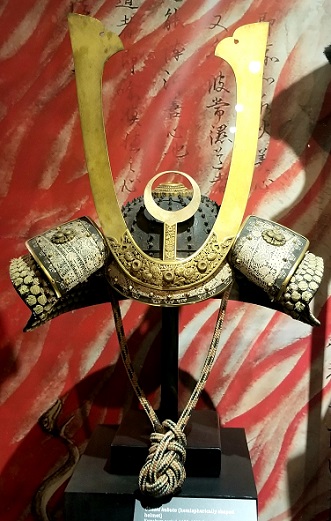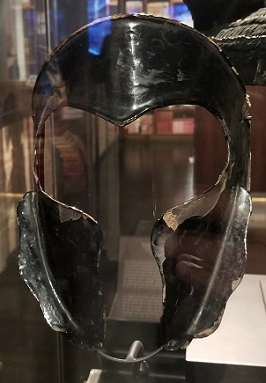Subject: 侍 samurai warrior
Culture: Japanese
Setting: Kamakura shogunate, 1185-1333
Object: 鎧 yoroi armor
* Metropolitan Museum of Art > Stone Gallery of Arms and Armor
"Armor (Yoroi)
Lacquered iron and leather, silkl, stenciled leather, gilt copper
Late Kamakura period, early 14th century
This is a rare example of a medieval yoroi. The yoroi is characterized by a cuirass that wraps around the body and is closed by a separate panel (waidate) on the right side and by a deep four-sided skirt. In use from around the tenth to the fourteenth century, yoroi were generally worn by warriors on horseback.
* Samurai Collection > Iron Men: The Artistry of Iron in Samurai Armor
"Ōboshi kabuto (hemispherically shaped helmet)
Kamakura period, 1192-1333 (bowl);
Edo period, 1615-1868 (mountings)
Iron, lacquer, leather, gold, silk, copper ...
This helmet has a traditional shape that was favored by samurai dating back to the tenth century. The classical helmet bowl (the part that covers the top of the head) has a rounded shape that is made of eighteen separate iron plates. The large, horn-like attachments are probably stylized representations of a deer's antlers."
* Samurai Collection > Iron Men: The Artistry of Iron in Samurai Armor
"Happuri (mask)
Kamakura period, 1185-1333
Iron, lacquer ...
This all-iron mask, a type called happuri, is the earliest form of face protection used by the samurai. It covers the forehead and cheeks and the standing flanges on the sides provided extra protection, making it more difficult for a blow from a blade to reach the wearer's face.
"While the exterior of the mask is lacquered black, the interior is coated with shiny, deep red lacquer. The red color may have produced reflections that gave the warrior's face a red, menacing glow."

